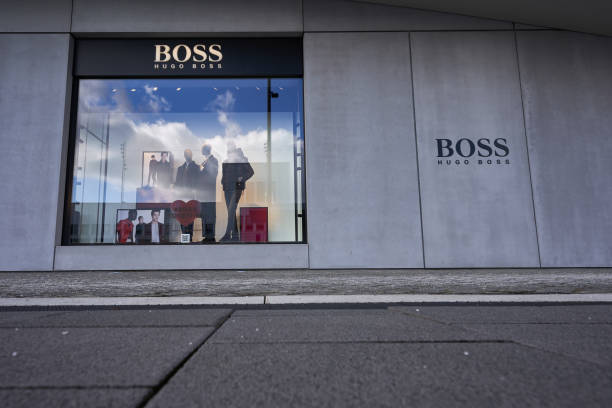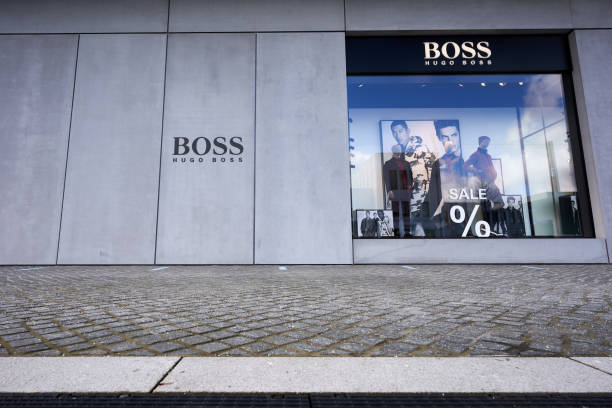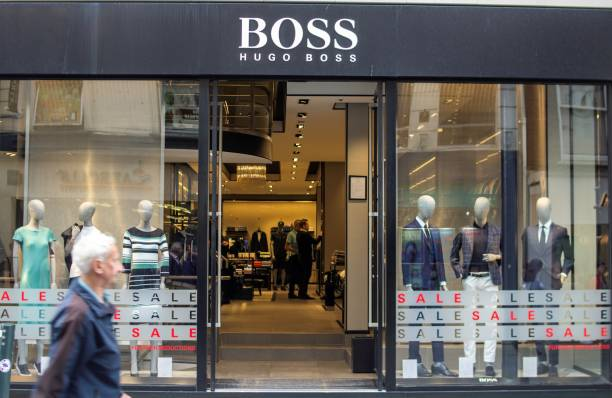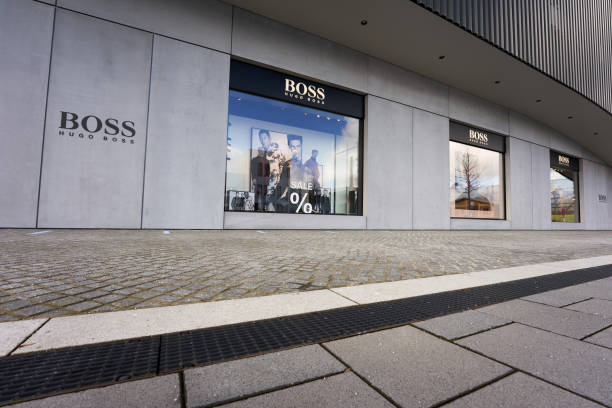Often, when shopping for premium clothing, shoppers encounter the labels Boss and Hugo Boss. While many consider them interchangeable, there are distinct differences that savvy customers need to understand. Hugo Boss, a long-established fashion house, encompasses two prestigious brands that cater to different aspects of the fashion market. This article aims to demystify the branding, providing clarity on what sets Boss apart from Hugo Boss, enhancing customer experience through informed choices in the realm of fashion brands.
Tracing the Roots of Hugo Boss
When Hugo Ferdinand Boss founded his eponymous brand in 1924, little did he know that it would become synonymous with precision tailoring and impeccable style. Initially aligning with military uniform production, the brand expanded post-war into men’s suits, laying the foundation for a fashion empire. Through the decades, Hugo Boss AG has grown into a powerhouse, constantly adapting to the evolving landscape of fashion while remaining true to its commitment to quality and craftsmanship.

The Emergence of Different Lines: Boss vs. Hugo Boss
The Hugo Boss brand experienced a significant transformation as it branched into different lines to cater to varied fashion needs and styling preferences. As a response to the dynamic fashion environment and the emergence of unique customer segments, the brand diversified its offerings. This strategic move resulted in distinct lines, each with its own identity, yet all residing under the greater umbrella of what we now recognize as Hugo Boss. The two main lines, Boss and Hugo, offer different experiences for customers, ranging from business attire to casual styles.
The Definition of Boss
Within the Hugo Boss family, Boss stands as the core brand that epitomizes luxury and sophistication. Mainly known for its tailored suits and professional wear, Boss offers an array of products that embody premium quality and timeless elegance. The line is targeted towards individuals seeking a refined and polished look, complementing the lifestyle of the contemporary professional. Boss womenswear and menswear collections bring forth new products that continue to shape the brand’s legacy in luxury fashion.
The Identity of Hugo Boss
Hugo Boss, on the other hand, refers to the entire label and its all-encompassing nature. It is the overarching identity that houses different brands, including Boss. It signifies the totality of the Hugo Boss world, incorporating various styles, from business wear to athleisure styles, across its diverse lines like HUGO and BOSS Green. By recognizing Hugo Boss as the parent brand, customers can explore a wider spectrum of collections, experiencing more than just the traditional Hugo Boss offering.
Distinguishing Features of Boss and Hugo Boss
The distinction between Boss and Hugo Boss lies not just in their product lines but also in their targeted demographics and design philosophies. Boss aligns itself with a classic, more conservative approach, while Hugo Boss embodies a broader, trendier, and more experimental avenue. This differentiation is reflected in numerous aspects of the brands—from product designs to marketing strategies—ensuring each brand resonates with its intended audience work.
Boss: Premium Elegance for the Modern Professional
Each item in the Boss collection, from business suits to accessories, is crafted with a focus on luxury and performance. The use of high-quality materials and meticulous construction techniques result in products that exemplify the brand’s commitment to excellence. With clean lines and refined styling, Boss caters to the discerning tastes of professionals who value sophistication in their wardrobe. The brand’s iconic Boss logos signify this enduring quality and prestige.
Hugo Boss: The Encompassing Brand Umbrella
Under the extensive Hugo Boss umbrella, customers can find a wider array of fashion choices. The brand harmonizes its different collections by offering a variety of styles, from the cutting-edge designs of HUGO to the sporty-chic aesthetics of BOSS Green. Here, the focus extends beyond tailored suits to include more casual and athleisure styles, targeting a different customer base that values versatility and modernity in their clothing.

The Evolution and Current Stance of Boss and Hugo Boss
Through the years, Boss and Hugo Boss have both evolved, constantly reinventing themselves to stay at the forefront of fashion. Their ability to adapt to changing market demands while staying true to their core values has cemented their status as leading fashion brands. In today’s market, they continue to innovate, introducing newer collections that capture the essence of contemporary styling while maintaining the heritage of the Hugo Boss name.
Market Position and Brand Perception
Today, Boss is perceived as the go-to for premium business attire, whereas Hugo Boss signifies a broader lifestyle brand. Market positioning strategies have bolstered this perception, with Boss exuding exclusivity and affluence, while Hugo Boss presents itself as more accessible yet still upscale. This strategic distinction has enhanced the brands’ appeal to their respective target customers, each offering unique experiences within the fashion domain.
The Marketing Strategies Differentiating the Brands
Marketing initiatives for Boss and Hugo Boss are meticulously crafted to reflect their distinct brand images. Boss campaigns often convey a world of professional success intertwined with personal luxury, while Hugo Boss tends to focus on a more holistic approach to lifestyle branding. These efforts are evident in the brands’ advertisement placements, spokesperson selections, and customer engagement programs, all tailored to communicate with their specific customer segments effectively.
Both brands have always been renowned for their innovation and quality, but their approach to fashion and demographic reach is distinct. To illustrate this difference, consider the following table and lists:
| Aspect | Boss | Hugo Boss |
|---|---|---|
| Brand Focus | Premium business attire and formalwear | Broad lifestyle brand including casual, athleisure, and formalwear |
| Target Audience | Professionals and affluent consumers | Wider audience including younger, fashion-forward consumers |
| Price Range | Higher-end, reflecting premium quality | Varied, offering options for more budget flexibility |
| Marketing Approach | Exclusive, with a focus on luxury and success | Inclusive, highlighting diversity and modernity |
Further, the numbered lists below elaborate on the specialized focus of each line:
Top Boss Collections:
- Boss Tailored Collection – Featuring high-end tailored suits and apparel.
- Boss Business – Offering professional wear that combines comfort with style.
- Boss Casual – Providing sophisticated yet casual styles for everyday wear.
The Diverse Lines of Hugo Boss:
- HUGO – Aimed at younger audiences, focusing on avant-garde designs.
- BOSS Green – Now known as BOSS Athleisure, this line combines fashion with functionality, perfect for sports and leisure activities.
- BOSS Orange – Although this line is now integrated into the other lines, it was once known for its bohemian influence on casual wear.

Conclusion
In conclusion, while the brand Hugo Boss lays the grand canvas of a fashion dynasty, it is the distinct lines such as Boss that add depth and texture to the overarching portrait. Boss represents the zenith of professional and formal wear, exuding a sense of luxury and exclusivity. Meanwhile, Hugo Boss as a whole offers a wider array of fashion choices, appealing to a broader customer base with its diversity in styles, from tailored suits to relaxed casual and athleisure pieces. Understanding these differences is crucial for consumers who seek to align their purchases with their personal brand preferences, ensuring an optimal fashion experience.
FAQs About Boss and Hugo Boss
Here are some common questions related to the differences between Boss and Hugo Boss:
- Is HUGO part of Hugo Boss or another brand? HUGO is one of the lines under the Hugo Boss brand umbrella, positioned as a more youthful and fashion-forward label compared to the core Boss line.
- Can I find Boss and Hugo Boss in the same store? Often, you can find both Boss and Hugo Boss products in the same flagship stores, official brand outlets, or department stores, although they may be displayed in different sections.
- Are there price differences between Boss and Hugo Boss products? Price differences can occur due to the different target markets and product positioning of the two lines, with Boss typically catering to a more premium segment.
- Why is it important to distinguish between Boss and Hugo Boss when shopping? Understanding the distinction allows consumers to align their purchases with their style preferences, desired quality, and the image each brand represents.
- Are the Boss and Hugo Boss lines targeted towards different age groups? While Hugo Boss, including the HUGO line, tends to target a broader audience, the core Boss line is usually associated with a more mature and professional demographic.
